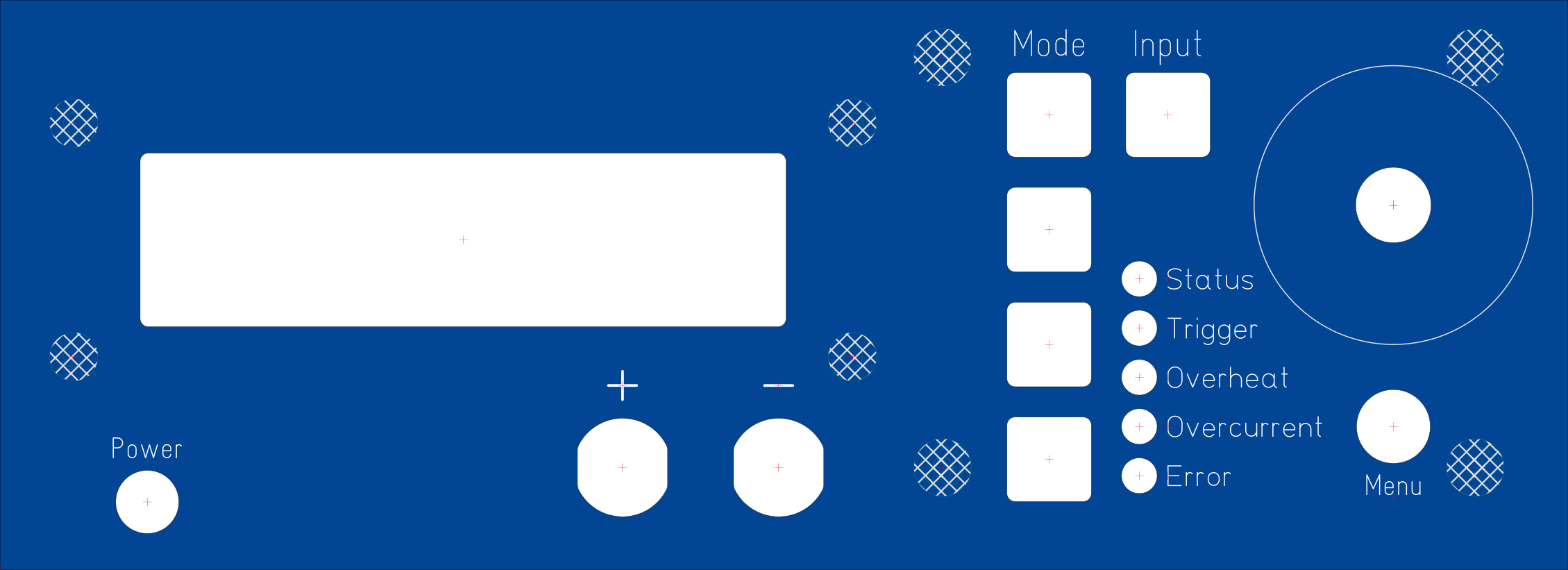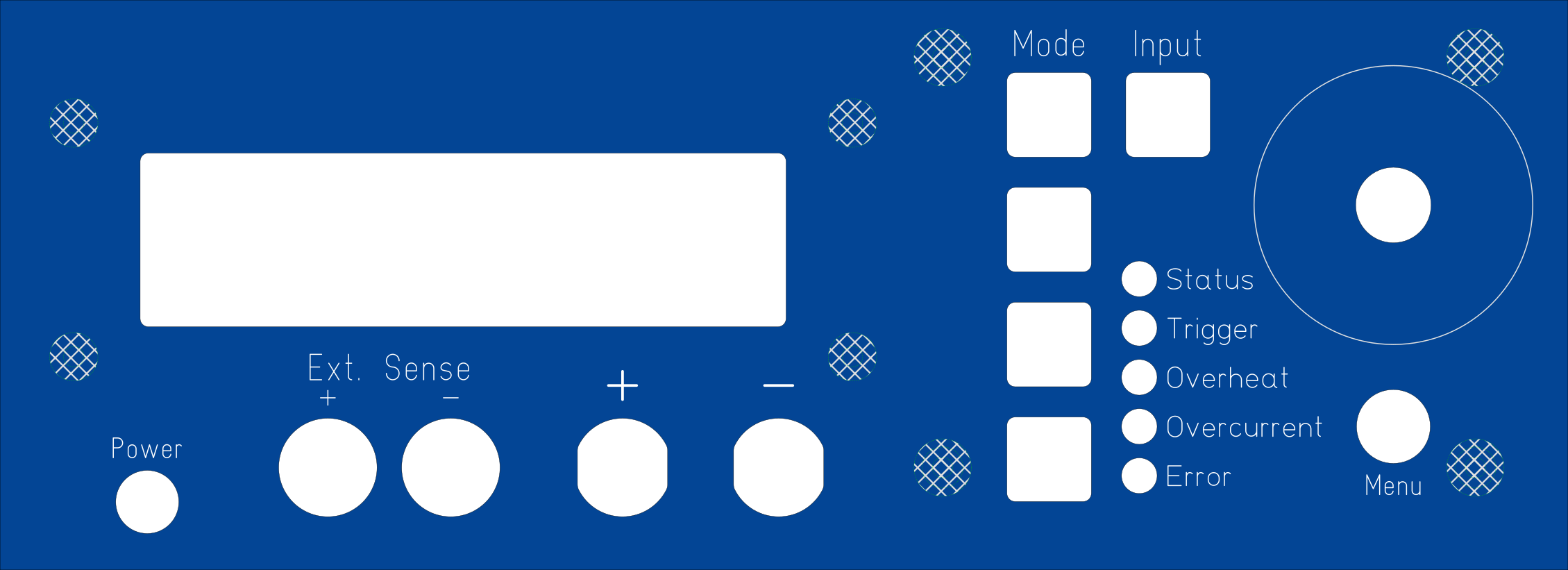Front Panel
The front panel features a few buttons, indicators, and a rotary encoder; it also is a breakout to connect to the display, but this is mounted separately from the board.
Note that the actual front panel board only covers the right third of the actual front panel: the area with the push buttons, indicators, and rotary encoder. It's mounted to the case via four 8mm standoffs with M2.5 thread, and should be screwed in with washers to distribute the force of button pushes best.
Buttons
The bulk of the buttons on the front panel consists of illuminated tactile switches (Omron B3W-9 type), which are further subdivided into the mode selectors (column of four switches, each with a single yellow LED) and the input on/off button (one switch, with dual red/green LEDs.)
Additionally, the button inside the rotary encoder (triggered when the knob is depressed) is available as a switch for selecting items in menu. It works in conjunction with the circular menu button (C&K D6R type) to browse menus.
Indicators
Indicators are LEDs, which are brought out to the front panel via light pipes. These indicators consist of one RGB LED (status,) one amber LED (trigger,) and three red LEDs (overheat, overcurrent, error.) Each LED can be individually controlled, and its brightness (current) adjusted.
All LEDs are connected to a PCA9955B constant current LED driver.
Display
Any SPI display is compatible with the front panel, though it is specifically designed for the ER-OLEDM032-1Y module (or any other compatible modules with other colors; do note that the display may need to be modified for 4 wire SPI operation, by soldering some resistors and jumpers) and its pinout.
Miscellaneous
On the front panel board, there is also an I2C EEPROM (AT24CS32 type) that contains the front panel’s exact configuration, including the switches available, mapping of switch inputs and LED outputs, and LED drive characteristics such as maximum current.

